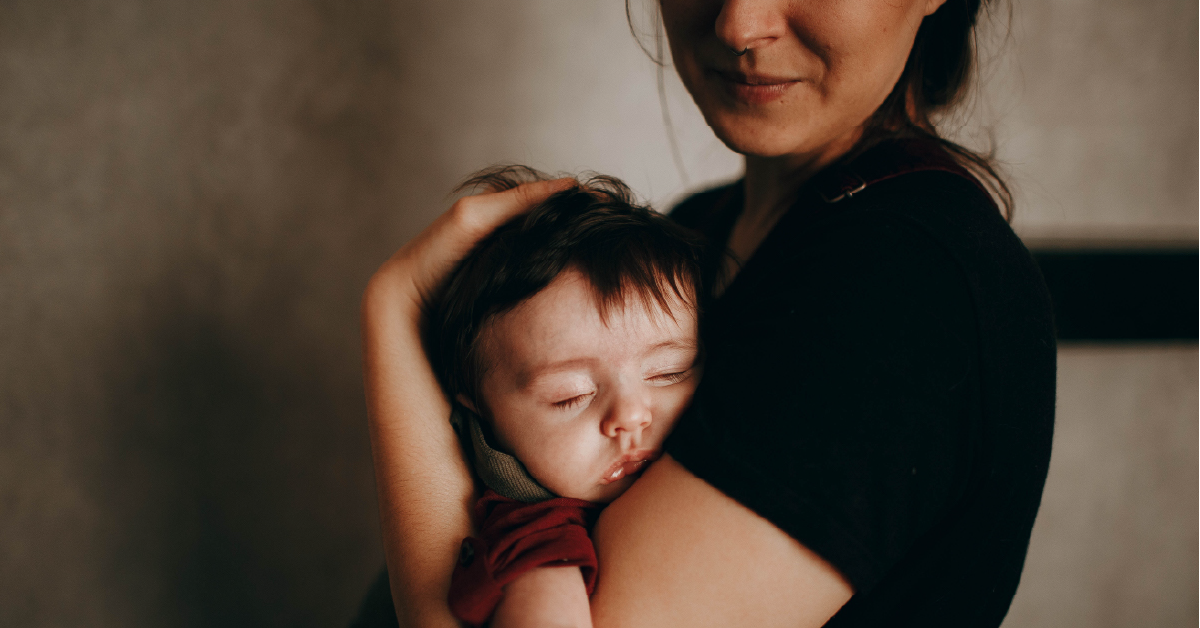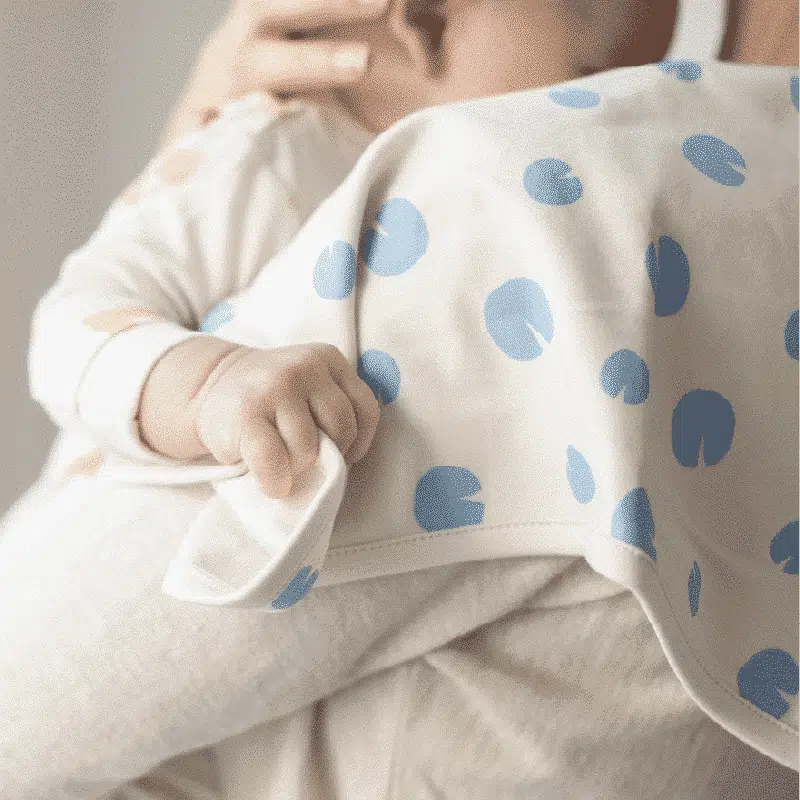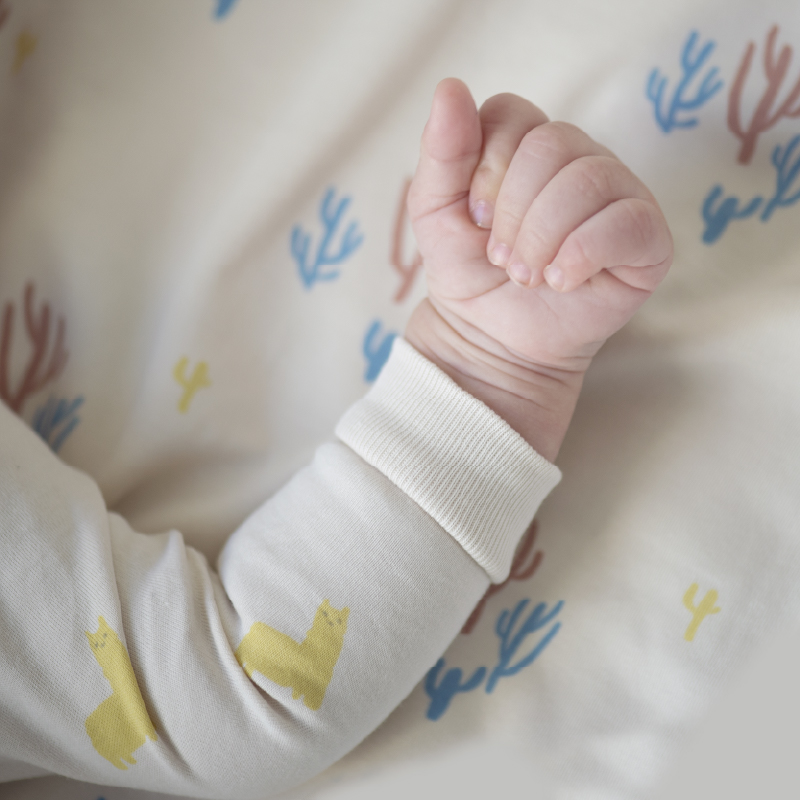Whether you’ve tried a thousand things and just can’t get your baby to go to sleep at night or the idea of your baby putting himself to sleep without an hour of rocking just sounds tempting, you might find yourself considering sleep training.
From the most popular methods of sleep training to the basic elements you need to consider to make it work.
Rockin’Blinks Cheatsheet
- It’s never too late to change habits that are not working for your baby (or toddler!).
- Understand your baby’s sleep needs according to his age to make sure he gets enough sleep.
- Have a plan and stay consistent.
Sleep training involves changing your baby’s sleep habits in a way that allows them to fall asleep in their crib, the same place where you expect them to sleep the rest of the night. I don’t really like the term “sleep training” because I don’t think you will actually be “training” your child, but the process will involve changing certain aspects of your baby’s sleep routine. It will be a transition process.
Are You Ready to Start Formal Sleep Training?
If getting your baby or older child to sleep at night has become a bit of a fiasco, you may be ready to consider a formal sleep training method.
Allowing your baby to fall asleep in his crib is a great way to help develop skills that support quality sleep .
If your family is ready to make sleep changes, you need a plan.
That plan should include:
- A Schedule: what time the bedtime routine will begin. Your baby’s schedule should also include a time for naps, respecting his sleep needs by age. Following an appropriate schedule is part of healthy sleep.
- A Sleep Routine: your family’s unique bedtime routine. Creating the cues for sleep so your baby knows when the time for rest is coming is a key element when going to bed. Babies thrive with routine and help them feel secure.
- A Method: what you will do while your baby tries to fall asleep. Whatever you are doing before the plan starts is not working, so from now on you need to know how you are going to support your baby while going from awake to asleep in the crib. Will explain the methods you can consider later in this article.
- A Boss: who is in charge? Ideally you and your partner (or any other caretaker) will work as a team. But sometimes it may be easier to choose the parent who stays calmer when the baby is struggling. Or If mom breastfeeding and wants to change that sleep association, dad would have a main role when putting the baby to sleep.
- A Contingency Plan: what happens during the night when the baby wakes up? Your baby will still wake up during the night, so you also need to decide what you are going to do during this time.
- + A plan for overnight feedings.
But First: The Don’ts
- Don’t expect your baby to be able to put himself back to sleep in the middle of the night if he is still falling asleep feeding or in your arms at the beginning of the night. He needs to develop the skills to fall asleep in his crib first.
- Don’t expect your baby to be able to go into deep sleep if his bedtime is too late. His sleep will be restless because he is overtired.
- Don’t change your strategy every night. In order for change to happen, your baby needs time to get used to the new routine.
Getting Started
Once your bedtime routine is complete and you’ve laid your baby in the crib still awake, expect him to have no idea what to do – because he won’t!
Your baby is used to being in your arms until he falls asleep. Be patient and acknowledge the confusion as he figures out how to get from awake to asleep without the regular support (rocking, patting, nursing) he has grown accustomed to.
Many parents worry about how hard sleep training will be for their baby, but also for themselves. I hear the concerns of parents who fear the idea of leaving their baby alone or worry they may not be able to remain consistent when they hear their baby crying.
That’s why finding a method that works for you is essential.
Here are a few of the most popular sleep training methods:
Pick Up / Put Down
Considered one of the methods that suggest most involvement from parents, Pick Up / Put Down is just what it sounds like. You stay in the room, picking up your baby when he cries, rocking until he settles, then placing him back in the crib again. The parent may remain in the room, repeating this until the baby falls asleep.
This option requires a lot of patience. While you will be responding to your baby picking him up every time he cries, it will also create frustration as every time he calms down you will put him back in the crib again. Stay consistent and follow the plan even if it takes a long time the first night.
This method works better with younger babies, between 3-4 months of age.
The Chair Method
In this method, the parent remains in the room, but in a chair next to the baby’s crib. The parent may shush and pat the baby until he falls asleep. Every few days, the parent moves the chair farther from the crib and closer to the bedroom door, until eventually the parent is gone and the baby can fall asleep on his own. PRO TIP: Stay consistent through the night. When your baby wakes during the night, go back to the chair and stay until your baby falls asleep again.
While in the chair, try to stay calm and limit interaction with your child. You will likely want to support your baby while he is struggling, but it is important to give him the message that it is time to sleep and in order to fall asleep we need to disconnect from the environment and let the day go.
The Ferber Method
Here, the parent explains to the baby that they will leave the room after laying him down, but will be back to check in. Choose a time you feel comfortable with to stay outside the room, then return, pat and shush, and leave again. Maybe three minutes feels good to you, maybe five or even ten. Stay consistent until your baby falls asleep.
Ferber recommends to start with 3 minutes visits and extend the time you wait outside the room for every visit.
Other sleep experts will recommend to keep the time the same for every visit, for example 5 or 10 minutes.
Whatever you do, stay consistent and use a watch to make sure you give your baby enough time to calm down and fall asleep without making the visit too stimulating.
PRO TIP: Keep the visit short, staying in the room only for a few seconds.
Cry it Out
The most controversial method, CIO, relies on the trust that your child will figure it out on his own. In this method, the parent lays the child in the crib and leaves the room completely. You will stay outside the room and allow your baby to fall asleep.
Similar to the phrasing of “sleep training”, the term “Cry It Out” is not good marketing for the method. Before you judge this intervention, know that many babies do really well with it.
The DIY Approach
Many parents apply ideas from different popular methods to create a Do-It-Yourself Approach that caters to their unique family. Some parents choose to create their own sleep training method from scratch!
You could try a mattress next to your baby’s crib for a few nights, or even just move super slowly and still allow your baby to sleep in your arms but without feeding. Whatever you choose, be fair with your baby and be very clear and consistent to avoid creating more confusion and frustration for you both.
Remember that while the change seems harsh on you and your baby, all the rest of the baby’s life and the routine of the day stay the same. Your baby will still wake up to loving parents, get his feeding, play in a loving peaceful environment, and have all his needs met. It’s just that things will change while falling asleep.
Nighttime feedings
Allowing your baby to fall asleep in his crib at the beginning of the night, does not have to involve dropping middle of the night feedings if your baby still needs them. Just know that not every time he will wake up might be because he is hungry.
Discuss the situation with your pediatrician to make sure your baby is ready to drop night feedings if you are considering this option.
After 4-6 months of age, babies need between 0 to 2 feedings during the night.
Even if your baby still needs to eat at night, ideally, during the first half of the night your baby will be mostly in deep sleep. So if your baby wakes up before midnight, support him with whatever method you choose to be with him at the beginning of the night, and allow him to fall back asleep.
Stay Consistent
No matter what method you choose, stay consistent.
Remember that nothing happens overnight. I recommend respecting a sleep training method – whether a popular method you bought a book about, or one you made up for your own family –, and a healthy schedule for at least two weeks before expecting to see solid results.
Validate the Feelings
Your baby will express discomfort around the change in sleep routine. Try to accept your baby’s feelings, and your own.
During the difficult part of sleep training remember that what you are feeling is not what your baby is feeling. You may feel worried, sad or even anguish as your baby cries his way through finding sleep. However, your baby is a different person who does not have all the worries of a parent.
Your baby is in a new situation, and he is tired. He’s crying, “Hey Mom, why aren’t you rocking me to sleep tonight? This is hard!” Let him have those feelings. He is going through a change but he is in a loving environment where he knows he is safe.
Good sleep is essential for a happy healthy childhood and life. Book a consultation with us now!
Subscribe to our Newsletter and get the latest in sales, sleep information and more









